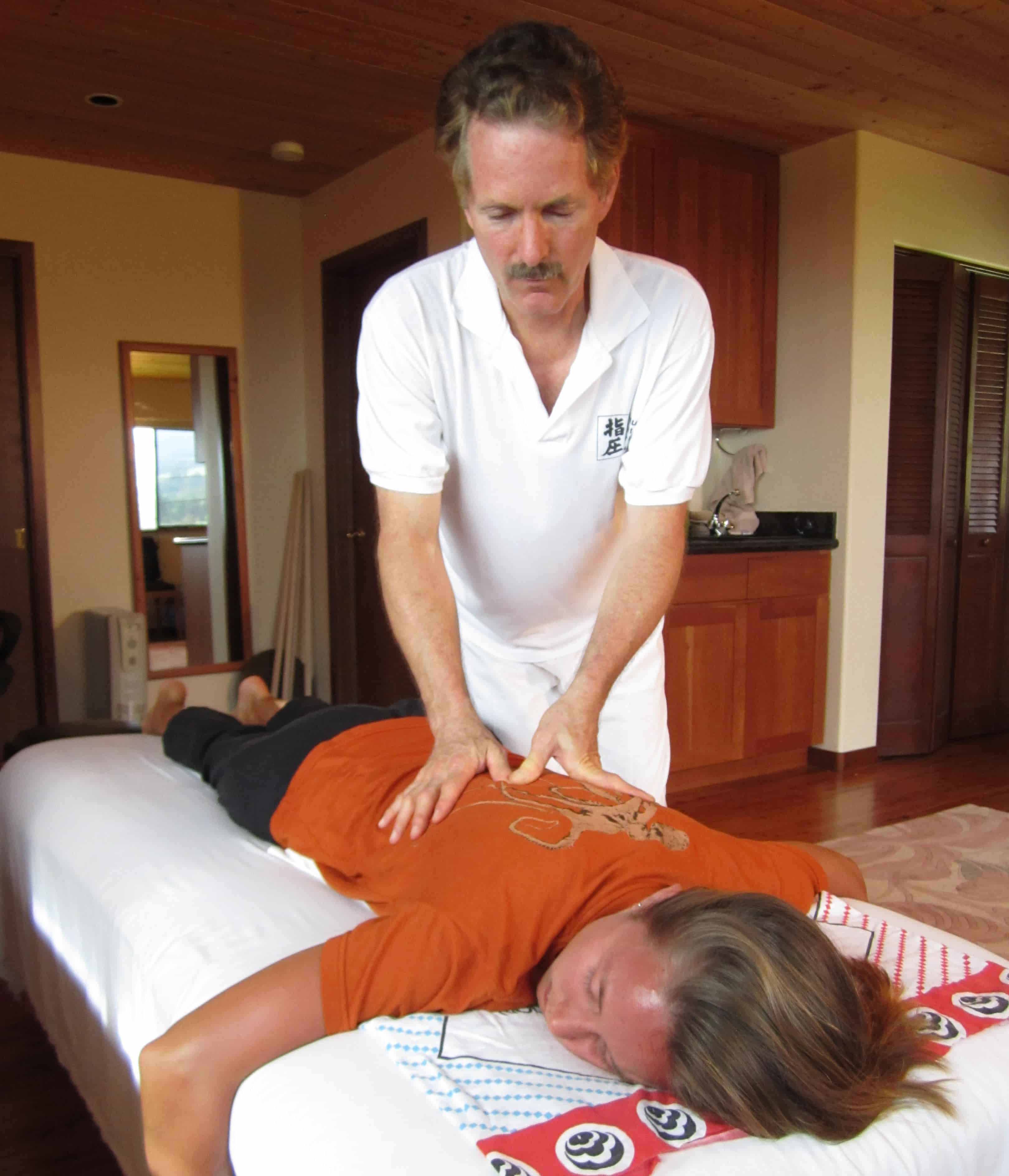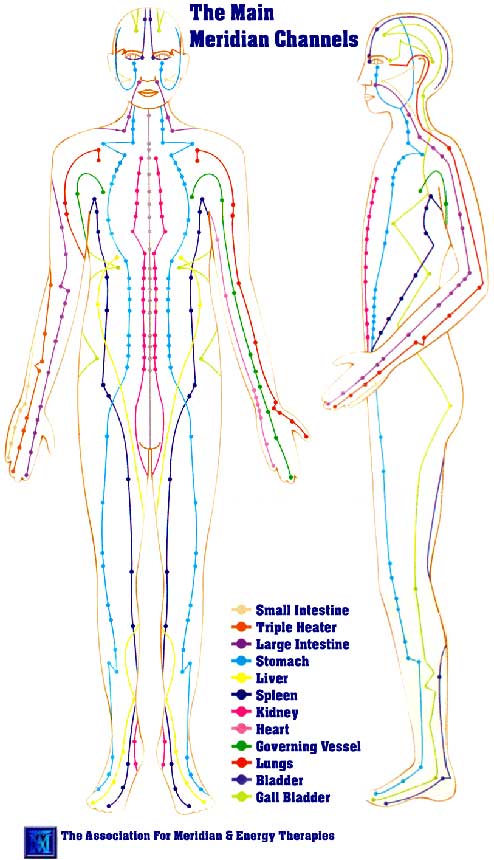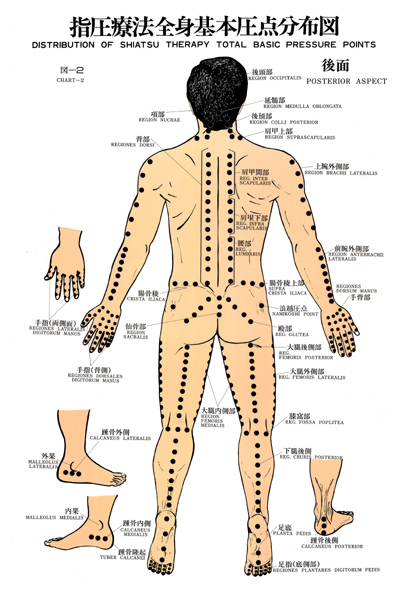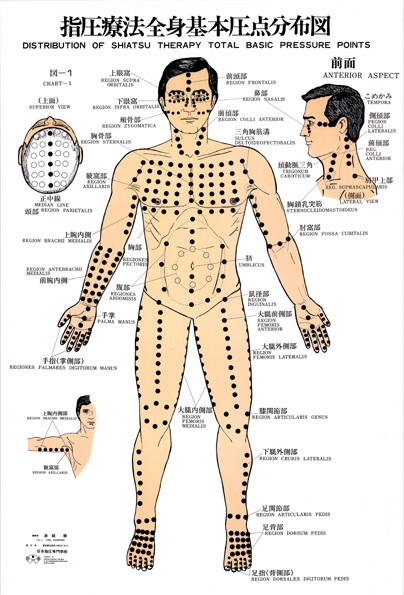What Is Shiatsu Therapy?
Shiatsu is not strictly speaking medicine; it is primarily a way to prevent the development of sickness. Unfortunately, modern medicine, based almost entirely on medical and surgical treatment, has reached an impasse because it has overlooked the natural curative powers of the body. Medical science has tended to have a weakening effect on the human body’s natural resistance and to devoting too much attention to coping with symptoms once illness has appeared. Consequently, patients sometimes reach such poor physical condition that the best skills of doctors are unable to effect cures. Shiatsu is based on the opposite approach: it strives always to keep the body in top condition so that symptoms requiring medical attention do not develop.
Shiatsu was originally a purely Japanese treatment system, but today it is steadily growing popular in many parts of the world. The Namikoshi Institute of Shiatsu Therapy was the first of its kind. In 1940, it was the only institution devoted solely to Shiatsu in Japan. In 1955, the Japanese Ministry of Health and Welfare recognized Shiatsu as a valid treatment in a general category with traditional Japanese massage (amma) and Western style massage. Since that time, the Namikoshi style of Shiatsu continued to expand and develop.


Why Shiatsu Works
Shiatsu strives to address ailments and prevent their recurrence and development. Pressure applied by the thumbs to certain points of the skin stimulates the body’s natural recuperative powers and removes fatigue by causing the diffusion of the lactic acid and carbon dioxide that accumulate among the tissues to cause muscular stiffness and stagnation of the blood. The accumulation of fatigue increases pressure distortions in the accumulated fatigue throughout the body. This causes irregular internal secretions and peculiarities in the skeletal system and internal organs. By diffusing accumulated fatigue, Shiatsu pressure restores flexibility to the muscle tissues and relieves pain producing symptoms throughout the body.
There is a large number of places closely related to the functioning of the body organs and vessels. Shiatsu Therapy is mainly concerned with the 660 zones (tsubo) where blood vessels, lymph vessels, nerves, and the ductless glands of the endocrine system tend to concentrate or to branch. Although the tsubo points potency are invisible on the skin, they are nonetheless of the greatest importance. Namikoshi style Shiatsu has incorporated tsubo points into a systematized treatment that is based on physiology and pathology. Simply pressing on the body and stimulating a response is not enough to bring about a truly therapeutic effect. One must have a correct and accurate knowledge of the specific tsubo points and must know how to vary thumb pressure, patient’s position, and introduce movement to bring about a positive outcome.
Characteristics of Shiatsu Therapy
Click on the toggles to reveal detailed answers.
1. Immediate Assessment
As your Shiatsu practitioner systematically presses the points along each meridian, or tsubo line, they are able to immediately assess the patient’s condition and determine the specific kind of therapy needed. A trained Shiatsu therapist has developed a sense of touch that enables him to spot irregularities in blood circulation, lymph stagnation, abnormal internal secretions, deformities in the skeleton and undue pressures exerted on the nerves. The information he derives from this examination and from an estimation of the condition of the muscles enables him to develop a specific protocol to follow and to bring about resolution of the treatment to use.
2. No Medicines or Mechanical Devices Needed
Shiatsu can be performed anywhere and at any time since it employs the simple application of human touch to address your condition.
3. No Unpleasant Sensations or Secondary Effects
Shiatsu therapy is pleasant and produces no unpleasant side effects or pains even if the patients muscles are stiff. Since no medicines, injections, or mechanical devices are used, Shiatsu produces no unpleasant secondary effects. It’s beneficial effects manifest themselves gradually.
4. Suitable to All Age Groups
In all ages, Shiatsu helps produce strong bodies and wards off illness. It helps prevent sicknesses and builds the immune system, common to age level, and it can slow the aging process and helps ensure longevity and continued good health and well-being.
5. Resistance to Sickness
A person who receives Shiatsu treatment learns to recognize the effects of fatigue and in this way develops a kind of health barometer within himself. Regular, periodic Shiatsu Therapy keeps the skin and muscles flexible and stimulates the regenerative powers on a cellular basis and strengthens the body and revitalizes the organs. This has the effect of creating a self – defense mechanism that increases the body’s powers of resistance and thus lowers the likelihood of sickness and disease.
6. Sense of Mutual Trust and Reliance
Ideally, Shiatsu is a relationship in which the patient and the practitioner exchange roles and in this way strengthen the effect of the treatment and stimulate a profound feeling of trust. In Shiatsu, the practitioner and the patient must work together and be committed to produce the desired effect of improved health and strength.
7. Treatment of the Entire Body
If Shiatsu were applied only to the part of the body in pain, its effect would be only temporary. Shiatsu itself would then be no more than a treatment of symptoms. But Shiatsu strives to generate strength and health throughout the entire body.
8. Positioning of the Client
Shiatsu Therapy is performed in the face down (prone) and face up (supine) position as well as the sideways posture. The sideways position enables the therapist to treat the cervical, thoracic and lumbar regions of the spine while the client is bolstered by pillows to allow for a relaxing and therapeutic experience.
Shiatsu Therapy and Chiropractic Work

While Shiatsu Therapy and Chiropractic come from very different backgrounds there are still many crossroads at which they meet and through which they can work together to the benefit of the patient.
Shiatsu and Chiropractic therapies are both hands on techniques. While chiropractic is concerned with the integrity of the spine to relieve numerous ailments, Shiatsu involves the application of pressure to specific points throughout the body to soften muscle tissue, relieve spasm, stimulate circulation and rejuvenate the systems of the body.
Shiatsu can be a particulary effective means of preparing the body for chiropractic treatment. In many cases, if the muscle tissue has been softened and made more supple by the Shiatsu treatment, the chiropractic manipulations will be easier and last longer. This is particularly noticeable in the case of patients with severe muscle spasm or accute strains such as those incurred by whiplash, lower back injuries, sciatica, and sports or work related injuries.
Shiatsu is a deep pressure point muscular therapy which stimulates the body’s own self – curative abilities. It is suitable for all ages and most conditions simply because the amount of pressure and the positioning of the patient are adapted to suit the individuals needs. The treatment is performed on a low, wide, comfortable table, fully clothed, with a normal session lasting approximately one hour.
While Shiatsu is a complete body treatment, emphasis is always given to the particular problem area. Specific instructions from the referring doctor are always closely followed and a professional relationship is maintained through the submission of written reports.
The combination of Shiatsu therapy and Chiropractic cures can have a very deep and therapeutic effect on the body, whether to relieve simple, muscular stifffness or to help the body recover its health after a severe trauma.

Contact and Hours
Hours
Open Mon, Wed, & Fri.
9:00 AM to 6:00 PM
By Appointment Only
*Parking provided on Kaohu Street
